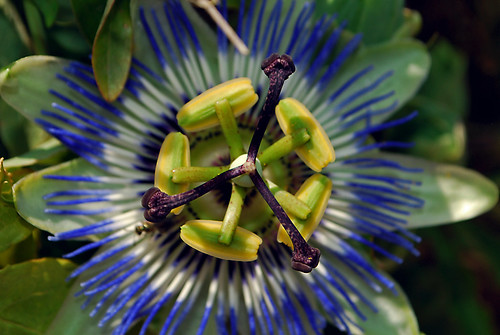Via Flickr:
Visit our Website
Follow us on Facebook
Passiflora caerulea, commonly known as the Blue Passion Flower or the Common Passion Flower, is a vine native to South America (Argentina, Paraguay (where it is widely known as the Mburucuyá in Guaraní) , Uruguay and Brazil). These names may also be applied to Passiflora edulis sometimes known as the passionfruit.
It is popular with gardeners because of its intricate, scented flowers that have an almost plastic-looking appearance.
A woody vine capable of growing to 15–20 m high where supporting trees are available. The leaves are alternate, palmately five-lobed like a spread hand (sometimes three or seven lobes), 10–18 cm long and wide. The base of each leaf has a flagellate-twining tendril 5–10 cm long, which twines around supporting vegetation to hold the plant up.
The flower is complex, about 10 cm in diameter, with the five sepals and petals similar in appearance, whitish in colour, surmounted by a corona of blue or violet filaments, then five greenish-yellow stamens and three purple stigmas. The fruit is an oval orange-yellow berry 6 cm long by 4 cm in diameter, containing numerous seeds; it is eaten, and the seeds spread by mammals and birds. In tropical climates, it will flower all year round.
Monday, October 24, 2011
Blue Passion Flower (P. caerulea)
Subscribe to:
Post Comments (Atom)

No comments:
Post a Comment